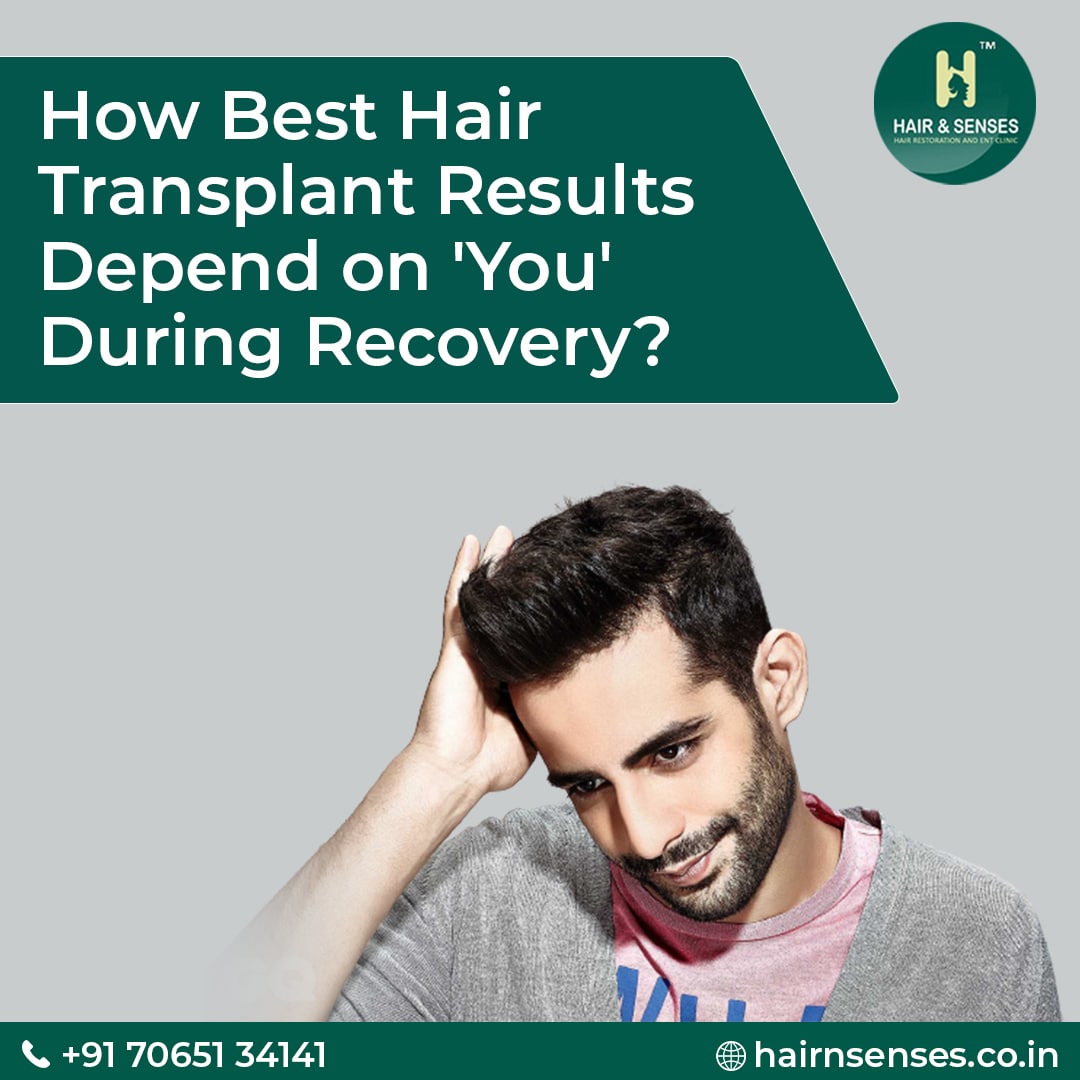How Best Hair Transplant Results Depend on You During Recovery?
August 25, 2019 | By Dr. Satinder Singh & Dr. Sangay Bhutia (Hair Transplant Specialist in Delhi)
The success of a hair transplant procedure depends on various factors like the quality and availability of donor hair, the expertise of the surgeon. But it also depends on the patient themselves and how well they take care of their scalp post a transplant. Like every medical procedure following post-operative instructions is essential to the success of a hair transplant as well.

Here is what patients should do while they are in the recovery period to ensure they get the best results:
Patients are advised to sleep keeping their head elevated for the first few days post surgery. They should use soft pillows or place a towel if there is oozing. You can wash your hair gently with a mild shampoo and avoid rubbing or using your fingernails for removing the crusting. You might dislodge the grafts if you rub too much during shampooing. The crusting will fall off on its own within a few days.
Some surgeons also advise washing hair a 2-3 times a day in the first week.
Patients can start combing their hair and following their normal hair care regime after the first week. The grafts are well-placed and settled in their new place in about the first 10 days.
Patients also have some swelling in the first few days which will subside on its own, but if it doesn’t within the first week or if there is too much pain or oozing, you should consult your surgeon immediately. Surgeons usually prescribe medicines for the first few days for patients who experience too much tightness or pain.
Patients can resume work or any light activities with two to three days, although if you want to take a week or so off to relax while the grafts are firmly in place and let the swelling subside, it is good for recovery.
The patients should also avoid contact sports, strenuous gymming, in the initial post-operative period which will make them sweat excessively. It can raise the risk of an infection or dislodging the grafts. Instead, you can engage in light yoga, walking, or more mindful activities for relaxation and exercise. After about 10 days, you can resume your regular exercise regime or play sports.
The other important precaution that completely depends on the patient is avoiding smoking and drinking. Now, both of these can cause a lack of flow of blood to the scalp, which deprives the new follicles from getting their essential nutrients and can affect hair growth. Nicotine causes blood vessels to contract causing this lack of blood flow, which can slow the process of healing the wound. Excessive smoking also means that patients are more at risk of an infection as the healing process is longer, and their scabs might not fall soon as well.
Recovery is a different process for every patient depending on their age, how long their body takes to heal, and their health in general. But if a healthy lifestyle, and proper precautions with mediation are followed, the recovery will be faster and patients will see good results from the transplant. A healthy diet, for instance, which contains iron, protein, vitamins, and zinc, found in eggs, fatty fish, green leafy vegetables, nuts, seeds, avocados, oats, berries etc, is very good for hair growth and general well being.
In about 3-4 weeks after the transplant, hair starts to fall, but it will regrow soon and thereafter hair will follow the normal growth process. The full growth after a transplant can be seen within a year of the procedure.
The surgeon's role is to give the best possible transplant to the patient, design an aesthetically-pleasing hairline and ensure that the patient does not need a corrective procedure later. But it is important to know that the patient’s role is equally important as well, especially in the postoperative period when the patient is on their own and taking care of the scalp.
